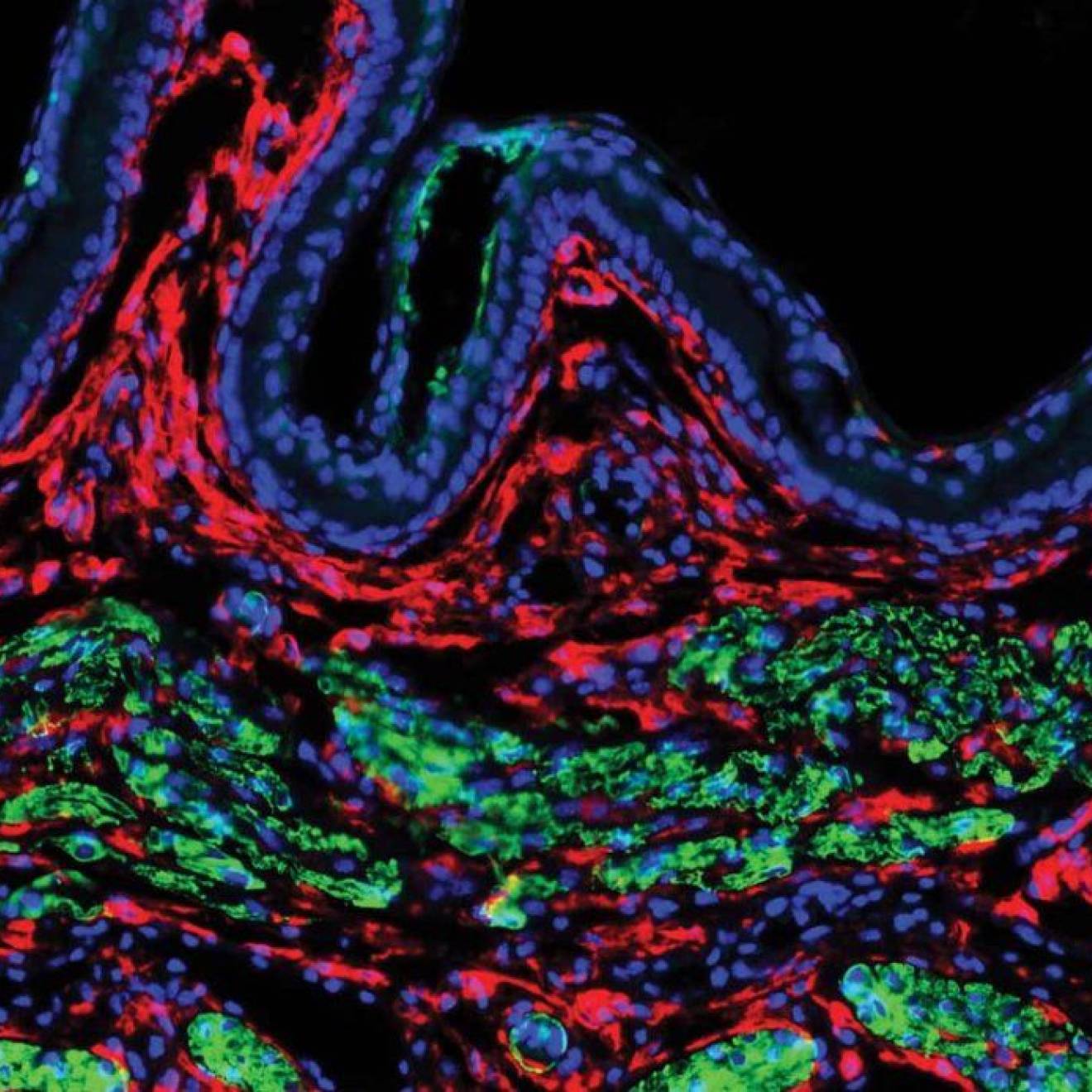UC Office of the President
UC scientists spearheaded key experiments in what some call the “Holy Grail” discovery in physics — a new particle that may prove to be the long-sought Higgs boson.
It was UC Santa Barbara physics professor Joe Incandela who made the highly anticipated announcement on July 4 in Geneva, Switzerland at the European Organization for Nuclear Research (CERN).
“We have observed a new boson,” Incandela announced to hundreds of cheering scientists and students attending a seminar, broadcast live via a webcast around the world. Evidence for the new particle is very strong, he said, and the pattern seen across the different observations is consistent with the theoretical predictions for the Higgs boson. “This is a preliminary report, but we think it’s very strong and very solid,” said Incandela, the spokesperson for the Compact Muon Solenoid (CMS) experiment for CERN.
In particle physics, bosons are a class of elementary particles. But the elusive Higgs boson, named after theoretical physicist Peter Higgs, is sought because it is crucial for explaining what gives protons, electrons, neutrons and all particles inside atoms their mass. It probably created all the particles in the Big Bang, when the universe formed.
Incandela and other UC physicists conducted experiments in the Large Hadron Collider (LHC) in Geneva. In the LHC, two counter-rotating beams of protons smash together at an energy of 8 trillion electron volts, producing millions of collisions per second. These collisions should produce, on rare occasions, an extremely unstable Higgs boson, which would immediately decay into lighter elementary particles. It is in this decay that physicists look for evidence of the Higgs particle.
At the LHC, Incandela and UC Santa Barbara’s High Energy group — which includes professors, engineers and 20 postdoctoral, graduate and undergraduate students — have contributed significantly to the construction of the highly complex CMS project, which is about the size of a four-story building and weighs 14,000 tons. The group played a strong role in constructing the high-precision particle tracking system, which is used to map the trajectories of particles created in the collisions. They helped to assemble components for the silicon particle tracker in clean rooms on the UC Santa Barbara campus.
UC San Diego role
UC San Diego scientists have played a major role in the search for the Higgs boson at the LHC. For more than a decade, professor James Branson’s group has studied how two photons would arise from a decaying Higgs boson and from other events. They helped optimize the detector’s ability to precisely measure the photons’ energy and trajectories, information the CMS team uses to determine what exactly happened, including the mass of the disintegrated particle.
“This is a historic moment in science. It is amazing how quickly we have confirmed the evidence of a signal at 125 giga electronvolts that we reported just six months ago,” said Vivek Sharma, professor of physics at the UC San Diego who led the search for the Higgs boson in the CMS experiment at CERN from 2010–11 and is now a member of the CMS editorial board.
UC Santa Cruz connection
Physicists from the Santa Cruz Institute for Particle Physics at UC Santa Cruz led key experiments at the LHC and at a particle detecting project called ATLAS. The team has been responsible for developing the silicon sensors and electronics for the ATLAS detector's inner tracker, which measures the trajectories of charged particles as they first emerge from the site of the collisions.
In addition, several theoretical physicists at UC Santa Cruz, though not directly involved in the experiments, are known for their roles in developing theories of the Higgs boson and how it could be detected. These include physics professor Howard Haber, coauthor of the 1989 book, “The Higgs Hunter's Guide.”
Lawrence Berkeley Lab participation
Scientists at the Lawrence Berkeley National Laboratory are major contributors to the ATLAS experiment at the LHC. “About 20 percent of the ATLAS collaboration comes from the U.S.,” said Beate Heinemann of the Berkeley Lab’s Physics Division and recently data preparation coordinator for ATLAS. “And one of the largest contingents is from Berkeley Lab, many of us in key positions.”
In addition to several Berkeley Lab physicists leading experiments, at any given time they may also have 10 students and 10 postdocs working on ATLAS, he said.
About the July 4 announcement of the discovery, Heinemann told the San Francisco Chronicle, "It's absolutely clear that there's a new particle, and it certainly could be the Higgs. It's mind-boggling, and there's even a hint that there might still be more particles to be detected."
UC Irvine
Professor Andrew Lankford is the deputy director of the ATLAS experiment, one of the LHC's four particle detectors. Eight UC Irvine faculty members and many postdoctoral researchers and staff members are involved with the LHC, developing electronics, computer systems and software integral to collecting and recording data.
UC Riverside
UC Riverside is a founding member of the CMS experiment. It was a key contributor to the design, prototype testing and construction of the endcap muon chambers, one of the principal detector components used in the search for the Higgs boson.Other central UC Riverside contributions include participation in the design, construction, commissioning and operation of the silicon-based tracker, and the commissioning and operation of the hadron calorimeter, both of which are fundamental to most CMS physics studies including the Higgs boson search.
International partnership
"It is remarkable that a huge, international collaboration can work so well under tremendous pressure,” said Jeffrey Richman, UC Santa Barbara physics professor who is part of the CMS research in Geneva. “Roughly 2,000 physicists and students work on the experiment, coming from nearly 200 scientific institutions. From constructing and operating the experiment to analyzing the data, this has been a monumental effort, and we have great scientific colleagues from all over the world.”

